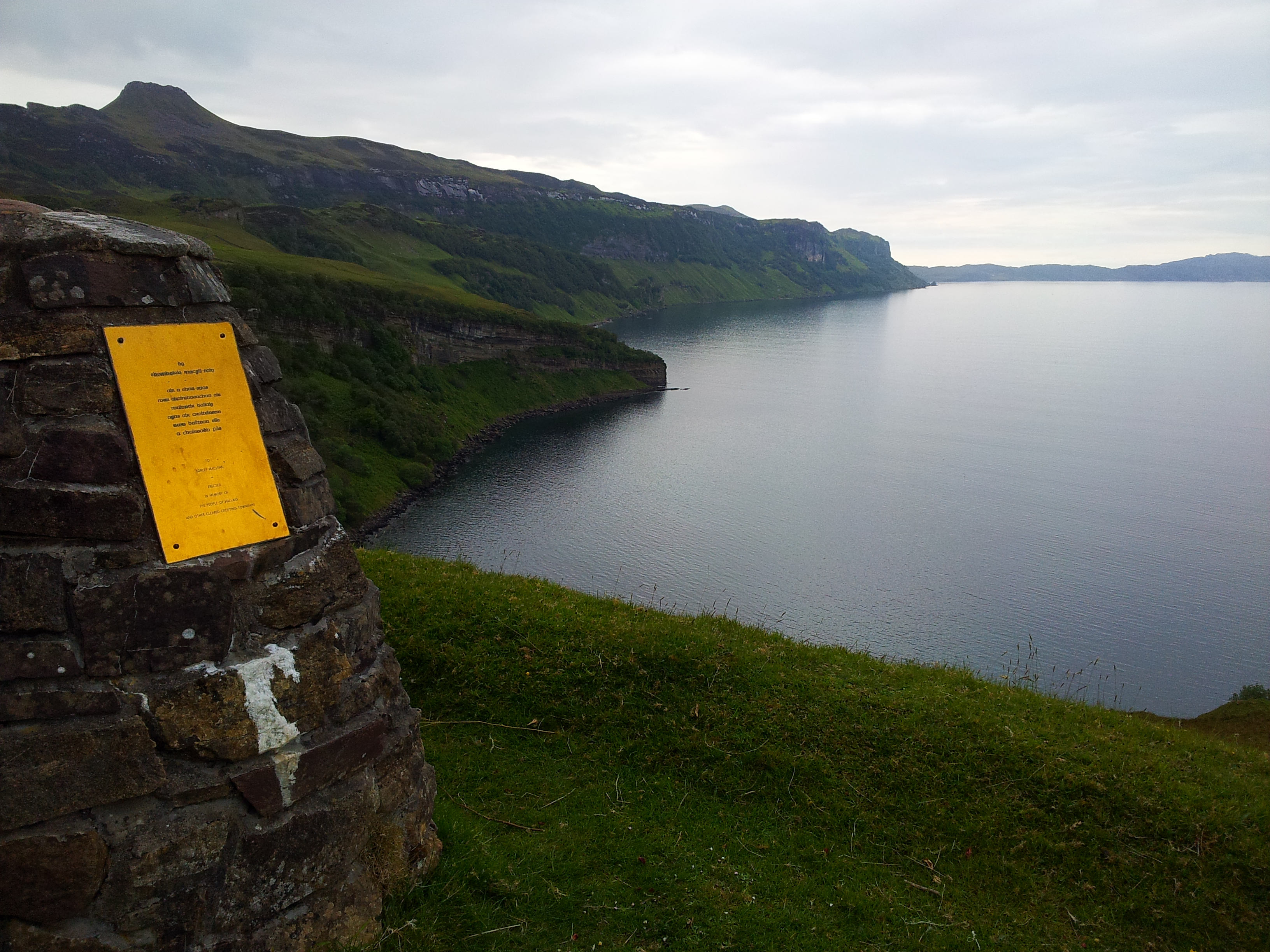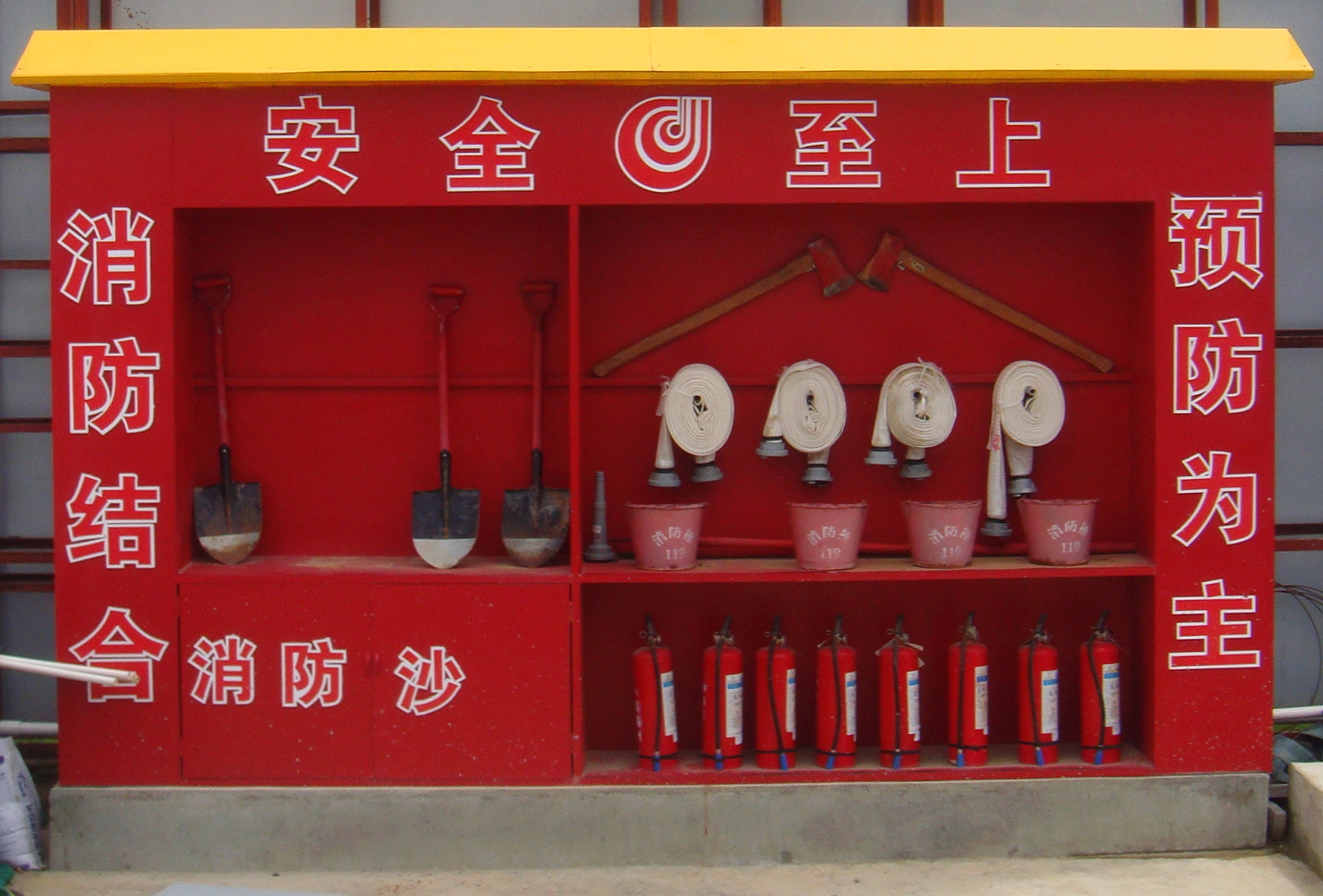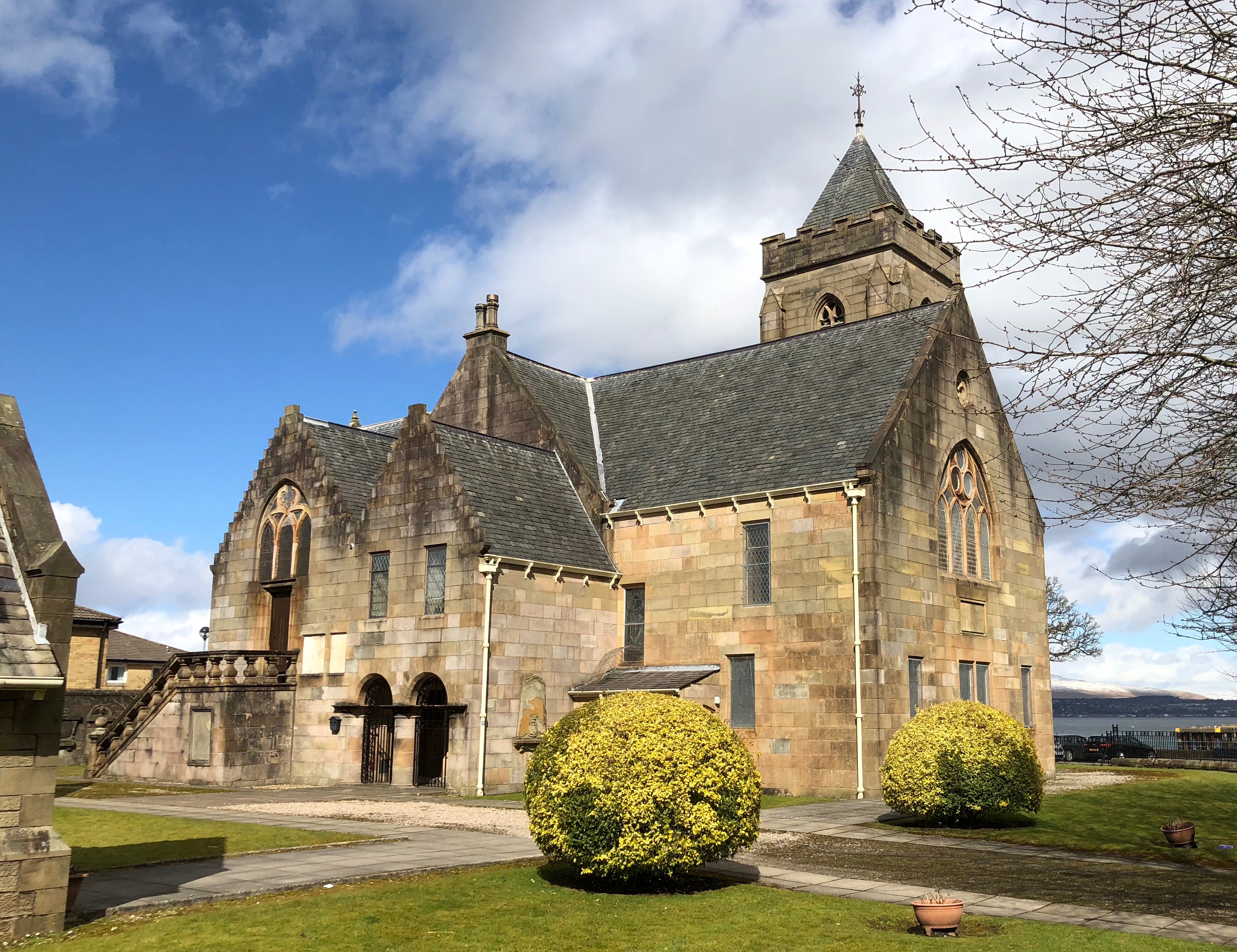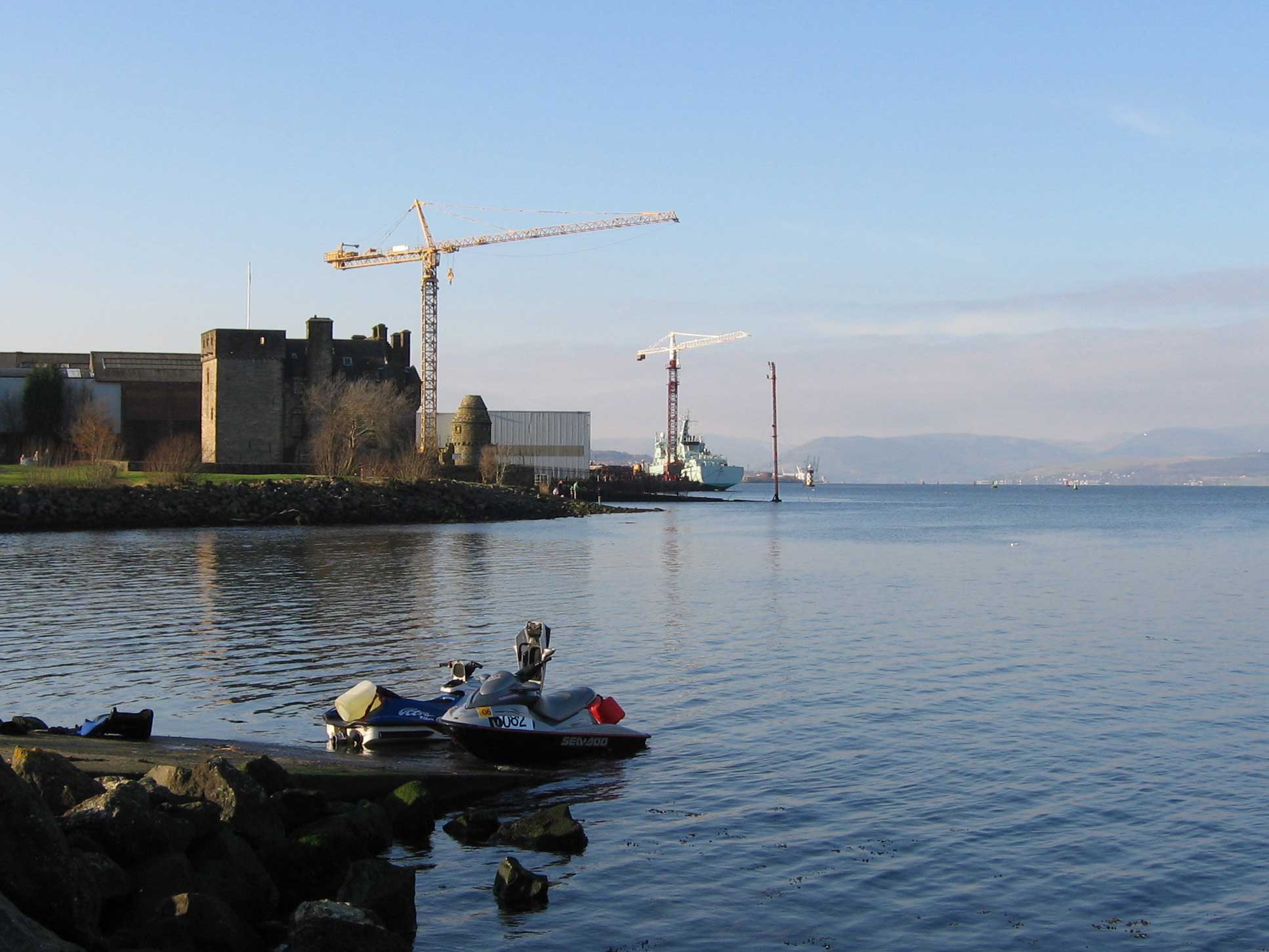|
MV Hallaig
MV ''Hallaig'' is a pioneering Diesel Electric Hybrid ferry built for the Caledonian MacBrayne service between Skye and Raasay. History ''Hallaig'' was launched in December 2012 at Ferguson Shipbuilders in Port Glasgow by Deputy First Minister Nicola Sturgeon. The name comes from a poem, written by Sorley MacLean, itself named after an abandoned township on Raasay. ''Hallaig'' was the first commercial ship to be fully built and delivered on the Clyde in over five years. The Scottish Government invested more than £20 million in the project. Layout ''Hallaig'' is the first of three roll-on roll-off hybrid-powered ferries. She has a low-carbon system of diesel electric and lithium-ion battery power. The 135-ton vessel is long and accommodates 150 passengers and 23 cars or two HGVs. Service ''Hallaig'' was built for the service between Sconser on Skye and Raasay and commenced service on 17 October 2013. The Clydebuilt ''Hallaig'' began her first sea trials on 5 August 2013, ei ... [...More Info...] [...Related Items...] OR: [Wikipedia] [Google] [Baidu] |
Hallaig
''Hallaig'' is the most recognized poem of Sorley MacLean, an important Scottish poet of the 20th century. After writing it, MacLean rose to fame in the English-speaking world. It was originally written in Scottish Gaelic since the author was born on the island of Raasay, where Scottish Gaelic was the everyday language. During the course of time the poem has been translated into both English and Lowland Scots. A recent translation (2002) was made by Seamus Heaney, an Irish Nobel Prize winner. Background The poem is named after a deserted township located on the south-eastern corner of the Hebridean island of Raasay, the poet's birthplace. The settlement of Hallaig depopulated between 1852 and 1854 under George Rainy and since MacLean's relatives were affected, the author decided to evoke the community of this abandoned village in his poem. It is a reflection on the nature of time and the historical impact of the Highland Clearances leaving an empty landscape populated ... [...More Info...] [...Related Items...] OR: [Wikipedia] [Google] [Baidu] |
Caledonian Maritime Assets
Caledonian Maritime Assets Limited (usually shortened to CMAL or CMAssets; Stòras Mara Cailleannach Earr in Scottish Gaelic) owns the ferries, ports, harbours and infrastructure for the ferry services serving the west coast of Scotland, the Firth of Clyde and the Northern Isles. CMAL is a wholly owned public corporation of the Scottish Government, with Scottish Ministers as sole shareholders. History Until 1 October 2006 Caledonian MacBrayne Ltd, which was wholly owned by the Scottish government, provided the majority of the Clyde and Hebrides ferry services and owned the associated vessels and a number of the ports and harbour facilities that the vessels used. These services required an annual revenue deficit grant from the then Scottish Executive to maintain lifeline service levels. To comply with European guidelines on State Aids in Maritime Transport, an open public tender was deemed necessary in respect of these ferry services and the Clyde and Hebrides Ferry Services ... [...More Info...] [...Related Items...] OR: [Wikipedia] [Google] [Baidu] |
2012 Ships
1 (one, unit, unity) is a number representing a single or the only entity. 1 is also a numerical digit and represents a single unit of counting or measurement. For example, a line segment of ''unit length'' is a line segment of length 1. In conventions of sign where zero is considered neither positive nor negative, 1 is the first and smallest positive integer. It is also sometimes considered the first of the infinite sequence of natural numbers, followed by 2, although by other definitions 1 is the second natural number, following 0. The fundamental mathematical property of 1 is to be a multiplicative identity, meaning that any number multiplied by 1 equals the same number. Most if not all properties of 1 can be deduced from this. In advanced mathematics, a multiplicative identity is often denoted 1, even if it is not a number. 1 is by convention not considered a prime number; this was not universally accepted until the mid-20th century. Additionally, 1 is the ... [...More Info...] [...Related Items...] OR: [Wikipedia] [Google] [Baidu] |
Dunoon
Dunoon (; gd, Dùn Omhain) is the main town on the Cowal peninsula in the south of Argyll and Bute, Scotland. It is located on the western shore of the upper Firth of Clyde, to the south of the Holy Loch and to the north of Innellan. As well as forming part of the council area of Argyll and Bute, Dunoon also has its own community council. Dunoon was a burgh until 1976. The early history of Dunoon often revolves around two feuding clans: the Lamonts and the Campbells. Dunoon was a popular destination when travel by steamships was common around the Firth of Clyde; Glaswegians described this as going ''doon the watter''. This diminished, and many holidaymakers started to go elsewhere as roads and railways improved and the popularity of overseas travel increased. In 1961, during the height of the Cold War, Dunoon became a garrison town to the United States Navy. In 1992, shortly after the dissolution of the Soviet Union, they closed their Holy Loch base in Sandbank, and nei ... [...More Info...] [...Related Items...] OR: [Wikipedia] [Google] [Baidu] |
Armadale, Skye
Armadale ( gd, Armadal) is a village near the southern end of the Sleat peninsula on the Isle of Skye, in the Highland council area of Scotland. Like most of Sleat, but unlike most of Skye, the area is fairly fertile, and though there are hills, most do not reach a great height. It looks out over the Sound of Sleat, to Morar and Mallaig. The name ’Armadale’, meaning ‘elongated valley’, derives from the Old Norse ''armr'' and ''dalr''. Clan Donald has a visitor centre situated next to the ruins of Armadale Castle Armadale Castle is a ruined country house in Armadale, Skye, former home of the MacDonalds. A mansion house was first built here around 1790, facing south-east over the Sound of Sleat. In 1815 a square Tudor-Gothic mock-castle, intended for show ... and surrounded by large gardens, while the nearby Sabhal Mòr Ostaig is a centre of Gaelic learning. The village is also a small port, and has a regular Caledonian MacBrayne ferry service to Mallaig. It i ... [...More Info...] [...Related Items...] OR: [Wikipedia] [Google] [Baidu] |
Mallaig
Mallaig (; gd, Malaig derived from Old Norse , meaning sand dune bay) is a port in Lochaber, on the west coast of the Highlands of Scotland. The local railway station, Mallaig, is the terminus of the West Highland railway line (Fort William and Mallaig branch) and the town is linked to Fort William by the A830 road – the " Road to the Isles". Development The village of Mallaig was founded in the 1840s when Lord Lovat, owner of North Morar Estate, divided up the farm of Mallaigvaig into 17 parcels of land and encouraged his tenants to move to the western part of the peninsula and turn to fishing as a way of life. The population and local economy expanded rapidly in the 20th century with the arrival of the railway. Ferries operated by Caledonian MacBrayne and Western Isles Cruises sail from the port to Armadale on the Isle of Skye, Inverie in Knoydart, Lochboisdale on South Uist and the isles of Rùm, Eigg, Muck, and Canna. Mallaig is the main commercial fis ... [...More Info...] [...Related Items...] OR: [Wikipedia] [Google] [Baidu] |
Fire Safety
Fire safety is the set of practices intended to reduce the destruction caused by fire. Fire safety measures include those that are intended to prevent the ignition of an uncontrolled fire and those that are used to limit the development and effects of a fire after it starts. Fire safety measures include those that are planned during the construction of a building or implemented in structures that are already standing, and those that are taught to occupants of the building. Threats to fire safety are commonly referred to as fire hazards. A fire hazard may include a situation that increases the likelihood of a fire or may impede escape in the event a fire occurs. Fire safety is often a component of building safety. Those who inspect buildings for violations of the Fire Code and go into schools to educate children on fire safety topics are fire department members known as ''Fire Prevention Officers''. The Chief Fire Prevention Officer or Chief of Fire Prevention will normally ... [...More Info...] [...Related Items...] OR: [Wikipedia] [Google] [Baidu] |
Greenock
Greenock (; sco, Greenock; gd, Grianaig, ) is a town and administrative centre in the Inverclyde council area in Scotland, United Kingdom and a former burgh within the historic county of Renfrewshire, located in the west central Lowlands of Scotland. It forms part of a contiguous urban area with Gourock to the west and Port Glasgow to the east. The 2011 UK Census showed that Greenock had a population of 44,248, a decrease from the 46,861 recorded in the 2001 UK Census. It lies on the south bank of the Clyde at the "Tail of the Bank" where the River Clyde deepens into the Firth of Clyde. History Name Place-name scholar William J. Watson wrote that "Greenock is well known in Gaelic as Grianáig, dative of grianág, a sunny knoll". The Scottish Gaelic place-name ''Grianaig'' is relatively common, with another (Greenock) near Callander in Menteith (formerly in Perthshire) and yet another at Muirkirk in Kyle, now in East Ayrshire. R. M. Smith in (1921) described the alternat ... [...More Info...] [...Related Items...] OR: [Wikipedia] [Google] [Baidu] |
Port Glasgow
Port Glasgow ( gd, Port Ghlaschu, ) is the second-largest town in the Inverclyde council area of Scotland. The population according to the 1991 census for Port Glasgow was 19,426 persons and in the 2001 census was 16,617 persons. The most recent census in 2011 states that the population has declined to 15,414. It is located immediately to the east of Greenock and was previously a burgh in the county of Renfrewshire. Originally a fishing hamlet named Newark, Port Glasgow came about as a result of large ships being unable to navigate the shallow and meandering River Clyde to the centre of the city of Glasgow. As a result, it was formed as a remote port for Glasgow in 1668, and became known as 'New Port Glasgow', which was shortened to 'Port Glasgow' in 1775. Port Glasgow was home to dry docks and shipbuilding beginning in 1780. The town grew from the central area of the present town and thus many of the town's historic buildings and people are found here. Port Glasgow expanded u ... [...More Info...] [...Related Items...] OR: [Wikipedia] [Google] [Baidu] |
Hybrid Ferry
Hybrid ferries are ferries that combine multiple sources of power (for example, traditional diesel with electric battery power), resulting in reductions in fossil fuel consumption, carbon emissions and other pollutants. Examples Scotland Three hybrid roll-on/roll-off ferries are in operation on the west coast of Scotland. They were launched between December 2012 and December 2015. California, United States When changing to hybrid ferries to and from Alcatraz Island in California, the National Park Service has reduced carbon dioxide emissions by an estimated 700,000 pounds. It does so by drawing power from a photovoltaic system that uses 959 photovoltaic panels that are located on the cell house roof power on the island. The ferry has its own photovoltaic panel and wind turbine on top that helps power the vessel. Washington, United States Washington State Ferries plans to introduce 22 diesel-electric ferries by 2040, cutting its annual diesel use from 19 to 9.5 million ga ... [...More Info...] [...Related Items...] OR: [Wikipedia] [Google] [Baidu] |
Caledonian Maritime Assets Limited
Caledonian Maritime Assets Limited (usually shortened to CMAL or CMAssets; Stòras Mara Cailleannach Earr in Scottish Gaelic) owns the ferries, ports, harbours and infrastructure for the ferry services serving the west coast of Scotland, the Firth of Clyde and the Northern Isles. CMAL is a wholly owned public corporation of the Scottish Government, with Scottish Ministers as sole shareholders. History Until 1 October 2006 Caledonian MacBrayne Ltd, which was wholly owned by the Scottish government, provided the majority of the Clyde and Hebrides ferry services and owned the associated vessels and a number of the ports and harbour facilities that the vessels used. These services required an annual revenue deficit grant from the then Scottish Executive to maintain lifeline service levels. To comply with European guidelines on State Aids in Maritime Transport, an open public tender was deemed necessary in respect of these ferry services and the Clyde and Hebrides Ferry Services (C ... [...More Info...] [...Related Items...] OR: [Wikipedia] [Google] [Baidu] |










